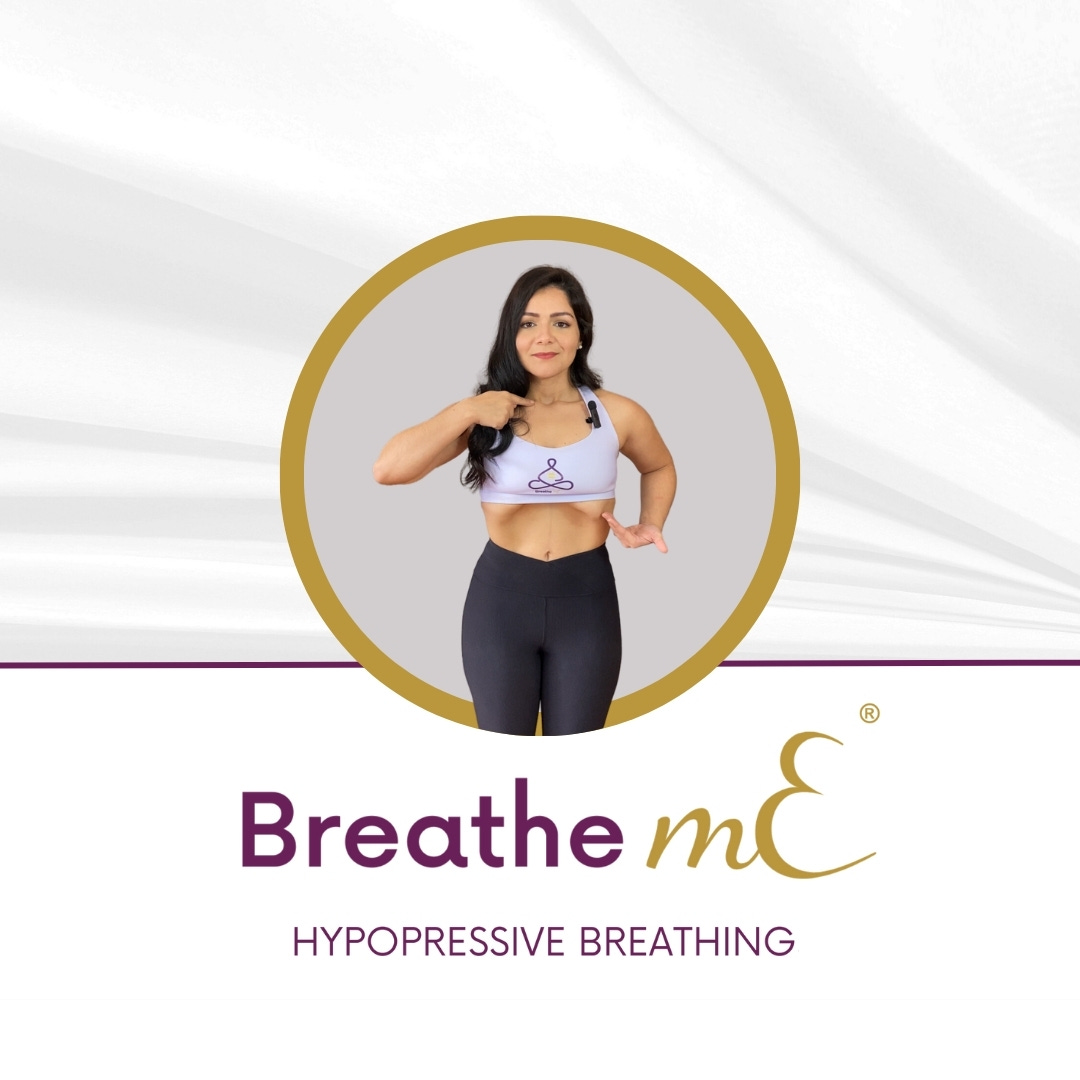Hypopressive is training system that combines poses and breathing techniques that strengthen your core muscles.
This is a practice that requires no equipment and delivers fast results.
When we breakdown the word hypopressive, we have HYPO that means low, and pressive = pressure. That is the main goal of this practice - to lower your intra-abdominal pressure. Why? Because high internal pressure is associated with several issues such as; abdominal muscle separation (diastasis), abdominal and umbilical hernias, back pain, herniated discs, pelvic floor dysfunction and many others.
Although you may have heard that gym workouts can strengthen your core muscles, that is rarely the case. It is possible, but highly difficult if you don’t understand the kinesiology of the abdominal cavity and proper breathing. As a result, the workouts that were supposed to improve your health and flatten your stomach, end-up doing the very opposite!
I am in no way telling you not to lift or train hard, I actually do these nowadays… but before you do so, let me share with you a few things about your muscles.
That are 3 types of muscles; cardiac, smooth and skeletal. The skeletal muscle, is divided into two types of muscles: fiber type I and type II.
Fiber type I is a slow twitch muscle that can be developed through specific endurance training whereas, the fiber type II muscles can be developed through strength training, meaning regular exercises. Now, do you know if the muscles from your abdominal cavity are type I or type II? Why do I ask and why does it matter?
A study shows that almost 60% of your abdominal muscles are type I, and like I mentioned before, the best way to increase muscle strength of this type is through endurance training of low impact. So when you are at the gym, unaware of that, crunching, squatting and planking, thinking that you are working your core muscles, chances are you are only engaging ~40% of your muscles while possibly neglecting the other 60%. There are a few studies on the correlation between crunches and diastasis as well as sit-ups and pelvic floor stress (I will share some studies at the end of this post.) As a PT I can tell you that I see more people doing crunches wrong than right, so it would be better to not just do it at all. At least, not until they can keep their core from bulging out during exercises and the way to achieve that is by gaining abdominal competence. Not strength, competence.
How can I gain abdominal competence? I am glad you asked!
So ON to the solution…
I am sure you might have seen a picture of someone practicing a stomach vacuum somewhere on the internet. It could be a photo of Arnold Schwarzenegger in the 80’s or a Z gen chick on TikTok… or me, up there!
Stomach vacuum is thousands of years old and has been practiced within the pranayama to this day. However, in the 80’s, Dr. Caufriez developed the Hypopressive maneuver, which combines more than 50 poses to the intentional breathing followed by the stomach vacuum. Upon lots of research, he discovered the best way to help people suffering with abdominal cavity dysfunction.
The Hypopressive technique doesn’t require any equipment, it can be done by most people1 and does not require a high financial investment. That is why I LOVE it so much - it is something affordable that can quickly aid or even heal many health conditions associated with high intra-abdominal pressure.
And to make even more affordable, I teamed up with YU2SHINE and created the Breathe-mE program. A program that consists in short videos that will instruct you on the foundation of the Hypopressive technique - from breathing to proper positioning - while guiding you through 12 weeks worth of classes so you can achieve many of the health and the aesthetics benefits associated with this practice from the comfort of your home.
No crazy workouts - low impact.
No equipments required - just you and yourself.
Five minutes a day - fast results!
IF YOU WANT TO BUY MY PROGRAM, CLICK THE LINK BELOW
IF YOU WOULD LIKE TO KNOW MORE ABOUT HYPOPRESSIVE CLASSES WITH ME, CHECK THE LINK BELOW
Few articles related to my post. Feel free to ask me for more.
https://pubmed.ncbi.nlm.nih.gov/161688/
https://link.springer.com/article/10.1007/s00192-015-2791-9
https://pubmed.ncbi.nlm.nih.gov/15233598/
https://ruc.udc.es/dspace/bitstream/handle/2183/11568/III_XEAFD_art_3.pdf?sequence=2&isAllowed=y
Individuals who cannot practice any exercise should not practice hypopressive.
Pregnant women, individuals with compromised heart health and severe abdominal inflammation should NOT practice hypopressive.
Before any type of training, consult with a doctor.







Amazing!
I did not know any of this, fascinant, je vais falloir l'essayer plus tard quand je soir pour randonner avec le chiot. Merci madame.